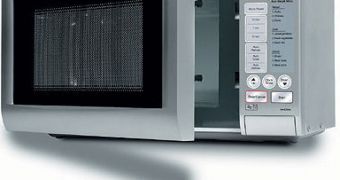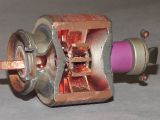They entered our lives less than four decades ago. Today most people can't imagine life without microwave ovens due to their extremely high efficiency and ability to cook and heat up food in short amounts of time. You just put food in the oven, set up a timer and at the end of the cycle all you have to do is eat. It doesn't get any easier than that!
As their name says, these ovens make use of microwaves to heat up food. Microwave radiation is an electromagnetic emission, with a frequency of about 2.5 gigahertz. Basically, microwaves are a type of radio waves, but at this specific frequency radio waves are absorbed by water. The energy released during microwave absorption is converted into water molecule vibration, which accounts for the heating effect in the food, which is mostly water by the way.
Most metals reflect microwave radiation, while plastics, glasses and ceramics allow microwave radiation to pass right through them.
Unlike traditional ovens, which heat up the food from outside towards the center, microwave ovens do exactly the opposite, cooking the food from inside out. This basically means that the microwaves penetrate food and cook it all at once, without requiring heat conduction phenomena such as in the case of hot, dry air ovens.
This process can sometimes have its own disadvantages. The heating process may not always heat the food evenly and could create so-called hot spots, mainly due to wave interference. Additionally, all the air inside a microwave oven is at room temperature, meaning that solid crusts no longer form on the exterior surface of the food when cooked at high temperatures.
A microwave oven generally consists of a high voltage transformer, a cavity magnetron, a microcontroller operating the magnetron circuit, a waveguide and a cooking chamber. The basic functioning is rather simple. The voltage transformer provides power for the magnetron, which in turn produces microwave radiation. The waveguide concentrates the radiation in the cooking chamber, thus heating the food. The cooking chamber is basically, a Faraday cage that prevents the microwave radiation from being released in the surrounding medium, contrary to common beliefs that microwave ovens can harm the user.

 14 DAY TRIAL //
14 DAY TRIAL // 
